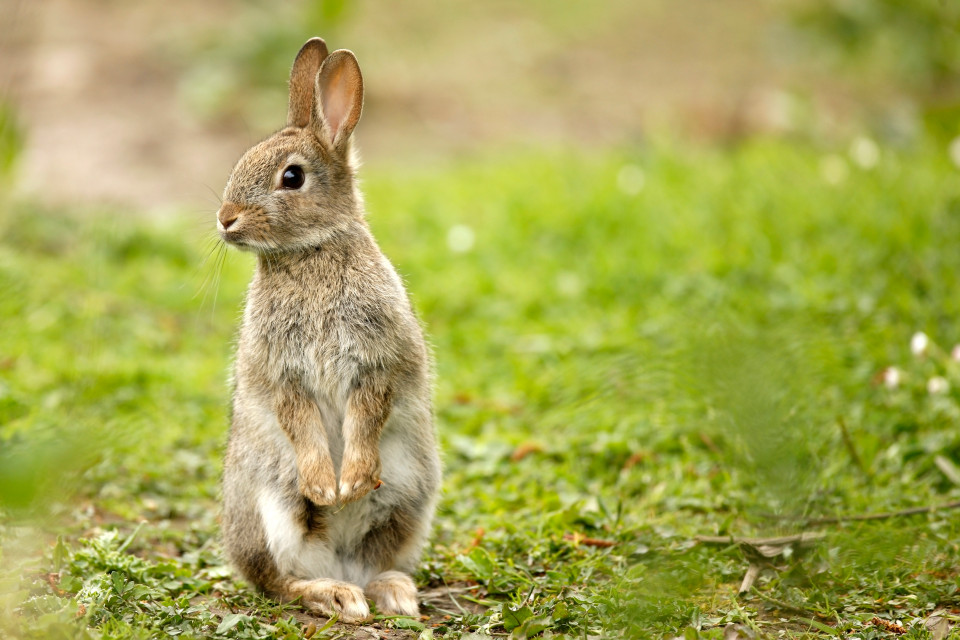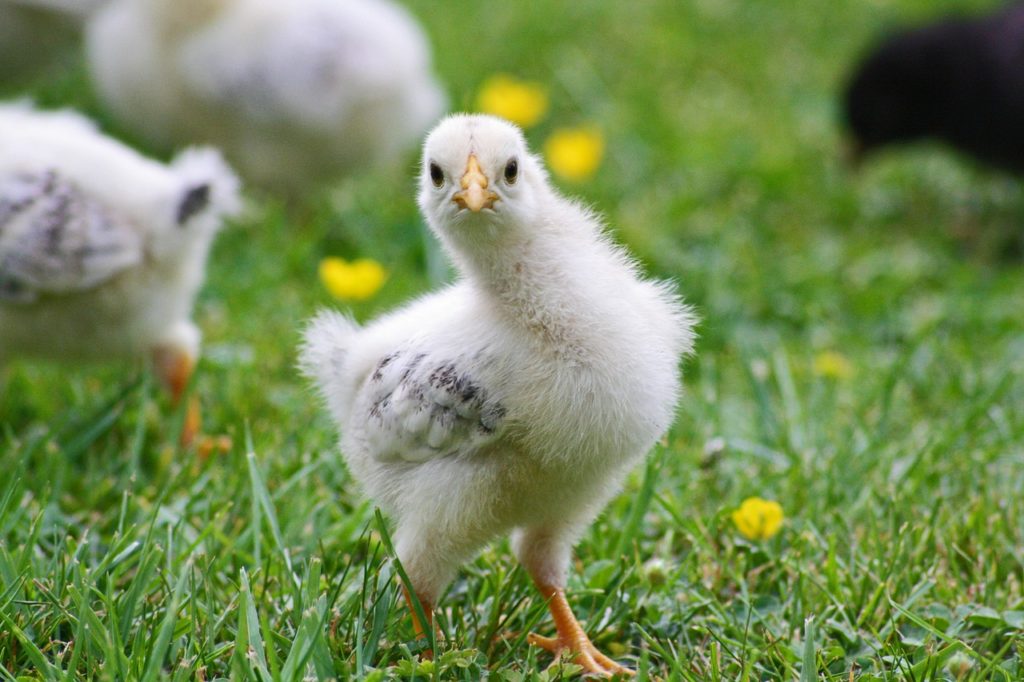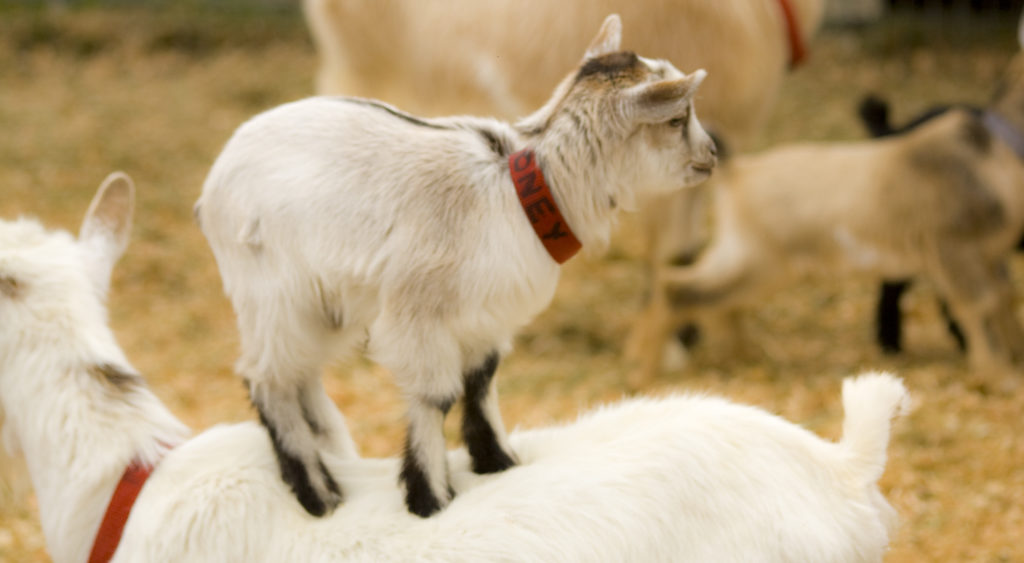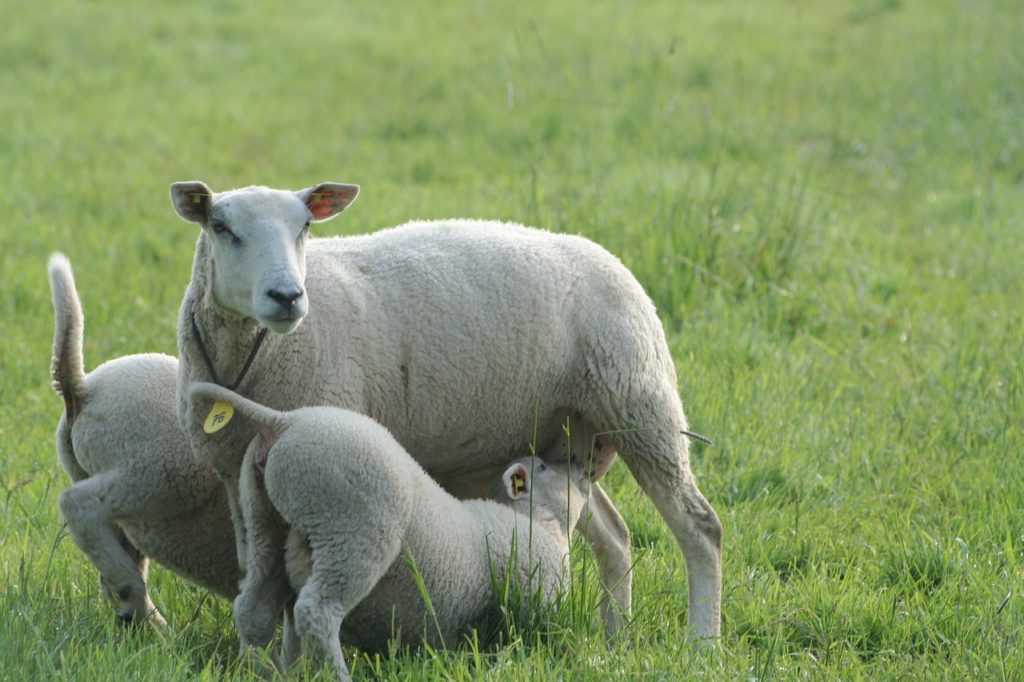Spring is officially here, so it’s time for some science about some of the most adorable baby animals. In my past training as an animal scientist at UC Davis, spring was largely marked by births within all the herds at our campus animal facilities. As a teaching assistant for the Animal Science department, I enjoyed interacting with these new additions and teaching future animal scientists how to safely practice animal husbandry. Considering the proximity of this post to the start of spring, I thought it fitting to discuss some of the history behind our most beloved spring animals and how they’ve contributed to science. Be the hit at your next cocktail party (or perhaps an Easter brunch) with these fun facts!
Rabbits and Kits
Rabbits and hares may be some of the most iconic symbols of spring, and they’re probably best associated with the season through tales of the Easter bunny. According to folklore, the hare was the sacred animal of the Germanic goddess of spring, Eostre. There are multiple legends through which Eostre is believed to have created the Easter hare. In one version, Eostre transformed a bird with frozen wings into a rabbit, allowing the resulting animal to retain its ability to lay eggs. In another version of the legend, Eostre became annoyed with a bird which prided itself on laying the most beautiful eggs, so she transformed the bird into a rabbit; in a moment of mercy, she allowed the rabbit to lay its eggs once per year, in the spring. No matter what you believe, it’s undeniable that rabbits and spring are a classic combination, and rightfully so, as their rapid proliferation easily casts them as symbols of fertility.

Rabbits are extremely prolific. In terms of their reproductive behavior, rabbits are classified as induced ovulators, meaning they ovulate after sexual stimulation. Rabbits also have a relatively short gestation, or pregnancy, lasting about 28-32 days. This short gestation period in addition to induced ovulation means that a reproductive female is capable of giving birth, or kindling, a new litter of kits as often as once per month. Over the course of one rabbit’s seven-year lifespan, a single female and her female descendants could produce over 100 billion new female rabbits! It’s no wonder these animals are associated with spring, a season marked by new life.
Besides their connection to spring, rabbits have also contributed to science as important model organisms. Rabbits provided the first model for cancer caused by a virus, which has been crucial for better understanding how human papillomaviruses (HPVs) cause cancer and in the development of vaccines against HPV infection. In addition, rabbits are commonly used to produce antibodies for laboratory use, such as for immunology and infectious disease research. Rabbits were also used in the development of certain vaccines, including the rabies vaccine, and surgical laser technologies. Finally, their physiology makes them ideal for studying several of the diseases plaguing humans, including cholera, cystic fibrosis, eye and ear infections, and non-infectious conditions such as those resulting from high cholesterol.
Chickens, Chicks, and Eggs
Chickens and the eggs and chicks they produce also hold special significance for the spring season. Similar to rabbits, chicks and eggs have been regarded as symbols of spring, reproduction, and new life, even in civilizations as far back as ancient Rome. In Catholicism, eggs came to be associated with spring, and particularly Easter, though the practice of Lent. Traditionally, fasting practices during Lent excluded the consumption of all animal products, including eggs. As lent ends with Easter, spring may additionally be associated with an abundance of eggs as a result of the holiday.
Another reason why chicks and eggs may be particularly associated with spring could be due to the unique laying cycle of hens. The avian reproductive cycle is stimulated by increased hours of daylight, as is characteristic of spring time. More specifically, light passing through the eye or skull of birds can be received by photoreceptors in the hypothalamus, which then activates the pineal gland, which in turn triggers the hormonal cascade that results in the production of eggs. If those eggs are fertilized by the passing rooster, then increased daylight hours mean more cute, fuzzy chicks!

Aside from the chicken’s ubiquitous use as an agricultural animal, chickens and their eggs have also helped scientists in the biomedical field! Eggs are the most common means of producing flu vaccines; the flu virus may be injected into eggs, allowed to replicate, and after several days these viral particles can be removed from the egg and heat inactivated to produce new flu vaccines. Current research with genetic engineering technologies has expanded the contribution of chickens to science, as researchers at the Roslin Institute in Scotland have now produced birds capable of producing and secreting medicinal antibodies into their eggs. These antibodies have the potential to treat diseases including melanoma and multiple sclerosis.
Sheep and Lambs; Goats and Kids
Finally, near and dear to my own heart, are lambs (young sheep) and kids (young goats). Having raised sheep in high school and performed research with goats and goat milk while working towards my Master’s, I relish any chance to talk about them. While lambs are a frequent biblical symbol associated with Easter, goats are a similar species also born in the spring, and goats have become quite the rage nowadays with activities such as baby goat festivals, goat yoga, goat party rentals, and even goat-kart races!

Within minutes after birth, lambs and kids are capable of walking, and one of the first items on their mind is food! Lambs and kids are both classified as ruminants, which means they have a specialized digestive system to help break down a plant-based diet. Ruminants have a single stomach with four compartments: the reticulum for temporary storage and size-sorting of feed, the rumen with its vast microbial population for fermentation of fiber, the omasum for water absorption, and the abomasum, which is akin to our own acidic stomach and helps with the chemical breakdown of food. Because lambs and kids are mammals like us, they solely consume milk for the first few weeks to months of their life. However, the microbial population in the rumen can potentially alter the nutrient composition of the milk and reduce its nutritional value for the offspring. So how do baby goats and sheep get around this hurdle? They have a specialized structure in early development, termed the esophageal or reticular groove, which bypasses the microbes within the rumen and allows milk to be broken down and digested directly from the abomasum. Isn’t that neat? Ruminants are the coolest!

Sheep and goats have also been crucial contributors to science. The aforementioned Roslin Institute is responsible for the first cloned mammal, Dolly the Sheep. Cloning of the first mammal helped pave the way for other genetic modifications in livestock. In previous years, milk from genetically engineered goats has been produced to include supplemental antimicrobial enzymes, such as lysozyme, in efforts to fight childhood malnutrition and diarrhea. Today, genetically engineered sheep are potential candidates for human organ generation due to their similar size and physiology to humans.
While spring is a time to enjoy the company of new furry, feathered, or woolen companions, it may also be a time to reflect on how all these species have contributed to science and the wellbeing of humans. So the next time you go to the grocery store to support your favorite animal industry, go to an event at your local farm, or attend your favorite goat yoga class, know that your efforts also support science!
Peer edited by Gabby Budziszewski.
Follow us on social media and never miss an article: